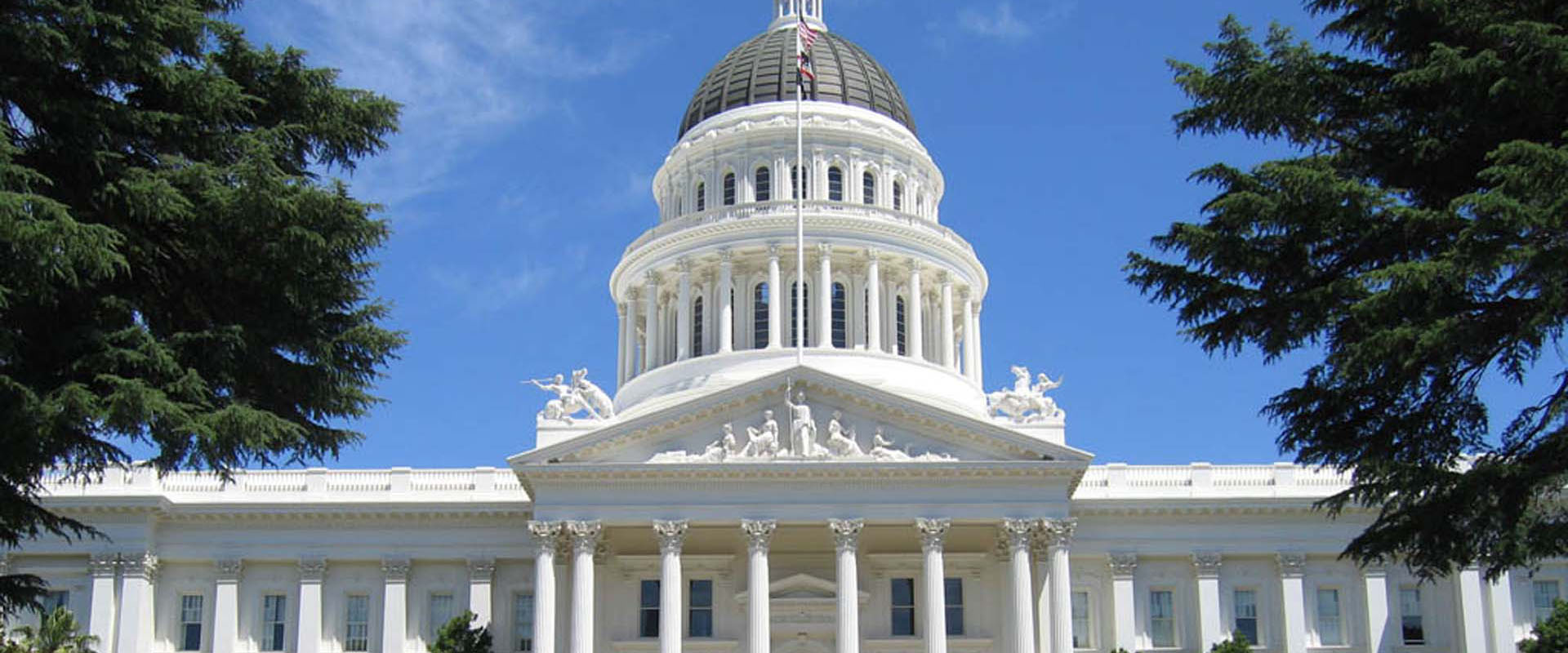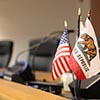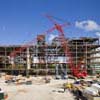California Environmental Quality Act (CEQA) Legislative Updates: SB 69, SB 149, & AB 356

March 2024
Number 15
The California Legislature recently enacted a series of updates to the California Environmental Quality Act (CEQA). Outlined below are three significant pieces of legislation: Senate Bill (SB) 69, SB 149, and Assembly Bill (AB) 356.
SB 69
Effective January 1, 2024, SB 69 amended Section 21152 of the Public Resources Code, providing that all environmental notices (i.e., notices of determination (NODs) and notices of exemption (NOEs) for projects that are filed with a county clerk must also be submitted to the State Clearinghouse using the Office of Planning and Research (OPR) CEQA portal. The county clerks and OPR must post the notices, including any subsequent or amended notice, both in the office and on the internet website of the county clerk and by the OPR on the State Clearinghouse internet website within 24 hours of receipt. CEQA requires an action or proceeding challenging an act or decision of a public agency, including a local agency, on the grounds of noncompliance with CEQA to be commenced within certain time periods. The bill specifies that the posting by the OPR will not affect these time periods within which an action or proceeding challenging an act or decision of a local agency on CEQA grounds must be commenced.
SB 149
In 2011, the California Legislature granted judicial streamlining authority for litigation under CEQA for a specific category of projects certified as Environmental Leadership Development Projects (ELDPs) by the Governor. Applicants seeking ELDP designation must meet specific eligibility criteria, codified in Public Resources Code section 21178 et seq. including greenhouse gas emissions and labor standards. In July 2023, the Governor signed SB 149 aimed at further streamlining the construction of critical infrastructure projects by extending the Governor’s authority to certify a project as an ELDP for an additional eight years, until January 1, 2032. For example, recently the “Fourth and Central Project” in Los Angeles, was certified as an ELDP and includes a 1,521-unit mixed-use residential development.
Notably, aside from extending the “sunset” of the ELDP process, SB 149 introduces a new set of projects eligible for streamlining. Specifically, SB 149 establishes procedures for expedited judicial review within 270 days, where feasible, for the following four categories of public and private infrastructure projects:
AB 356
AB 356 extended a CEQA provision that was set to expire on January 1, 2024. The provision specifies that, under most circumstances, a lead agency is not required to evaluate the aesthetic effects of a project and aesthetic effects are not considered significant effects on the environment if the project involves the refurbishment, conversion, repurposing, or replacement of an existing building that meets certain requirements. These include but are not limited to a requirement that the building is abandoned, dilapidated, or has been vacant for more than one year, the project includes the construction of housing, and the project does not create a new source of substantial light or glare. This bill extended the provision to January 1, 2029. In removing the existing January 1, 2024, expiration, AB 356 continues to allow for the very narrow exemption which ultimately promotes redevelopment projects.
Takeaways
AB 356 and SB 149 primarily maintain the status quo, by extending existing provisions of CEQA that were set to expire. Lead agencies should take note of the new notice requirements of SB 69, which require NODs and NOEs to be submitted through OPR’s portal. The process for submitting CEQA documents and notices to the State Clearinghouse through OPR’s portal requires user registration, including a process for users being approved as an “admin” filer in order to submit or approve submitters. Lead agencies should familiarize themselves with the filing process ahead of time.
For more information on the new CEQA legislation or environmental impact issues in general, please contact the authors of this Client News Brief or any attorney at one of our eight offices located statewide. You can also subscribe to our podcasts, follow us on Facebook, Twitter and LinkedIn or download our mobile app.
Number 15
The California Legislature recently enacted a series of updates to the California Environmental Quality Act (CEQA). Outlined below are three significant pieces of legislation: Senate Bill (SB) 69, SB 149, and Assembly Bill (AB) 356.
SB 69
Effective January 1, 2024, SB 69 amended Section 21152 of the Public Resources Code, providing that all environmental notices (i.e., notices of determination (NODs) and notices of exemption (NOEs) for projects that are filed with a county clerk must also be submitted to the State Clearinghouse using the Office of Planning and Research (OPR) CEQA portal. The county clerks and OPR must post the notices, including any subsequent or amended notice, both in the office and on the internet website of the county clerk and by the OPR on the State Clearinghouse internet website within 24 hours of receipt. CEQA requires an action or proceeding challenging an act or decision of a public agency, including a local agency, on the grounds of noncompliance with CEQA to be commenced within certain time periods. The bill specifies that the posting by the OPR will not affect these time periods within which an action or proceeding challenging an act or decision of a local agency on CEQA grounds must be commenced.
SB 149
In 2011, the California Legislature granted judicial streamlining authority for litigation under CEQA for a specific category of projects certified as Environmental Leadership Development Projects (ELDPs) by the Governor. Applicants seeking ELDP designation must meet specific eligibility criteria, codified in Public Resources Code section 21178 et seq. including greenhouse gas emissions and labor standards. In July 2023, the Governor signed SB 149 aimed at further streamlining the construction of critical infrastructure projects by extending the Governor’s authority to certify a project as an ELDP for an additional eight years, until January 1, 2032. For example, recently the “Fourth and Central Project” in Los Angeles, was certified as an ELDP and includes a 1,521-unit mixed-use residential development.
Notably, aside from extending the “sunset” of the ELDP process, SB 149 introduces a new set of projects eligible for streamlining. Specifically, SB 149 establishes procedures for expedited judicial review within 270 days, where feasible, for the following four categories of public and private infrastructure projects:
- Energy infrastructure projects, including new energy storage systems of 20 megawatts or more, excluding pumped hydro. For context, “pumped hydro” is a form of energy storage and generation involving pumping water to a higher elevation during off-peak hours, which is then used to power standard hydroelectric generators during high-demand hours.
- Semiconductor or microelectronic projects.
- Certain transportation-related projects.
- Certain water-related projects.
AB 356
AB 356 extended a CEQA provision that was set to expire on January 1, 2024. The provision specifies that, under most circumstances, a lead agency is not required to evaluate the aesthetic effects of a project and aesthetic effects are not considered significant effects on the environment if the project involves the refurbishment, conversion, repurposing, or replacement of an existing building that meets certain requirements. These include but are not limited to a requirement that the building is abandoned, dilapidated, or has been vacant for more than one year, the project includes the construction of housing, and the project does not create a new source of substantial light or glare. This bill extended the provision to January 1, 2029. In removing the existing January 1, 2024, expiration, AB 356 continues to allow for the very narrow exemption which ultimately promotes redevelopment projects.
Takeaways
AB 356 and SB 149 primarily maintain the status quo, by extending existing provisions of CEQA that were set to expire. Lead agencies should take note of the new notice requirements of SB 69, which require NODs and NOEs to be submitted through OPR’s portal. The process for submitting CEQA documents and notices to the State Clearinghouse through OPR’s portal requires user registration, including a process for users being approved as an “admin” filer in order to submit or approve submitters. Lead agencies should familiarize themselves with the filing process ahead of time.
For more information on the new CEQA legislation or environmental impact issues in general, please contact the authors of this Client News Brief or any attorney at one of our eight offices located statewide. You can also subscribe to our podcasts, follow us on Facebook, Twitter and LinkedIn or download our mobile app.
As the information contained herein is necessarily general, its application to a particular set of facts and circumstances may vary. For this reason, this News Brief does not constitute legal advice. We recommend that you consult with your counsel prior to acting on the information contained herein.







